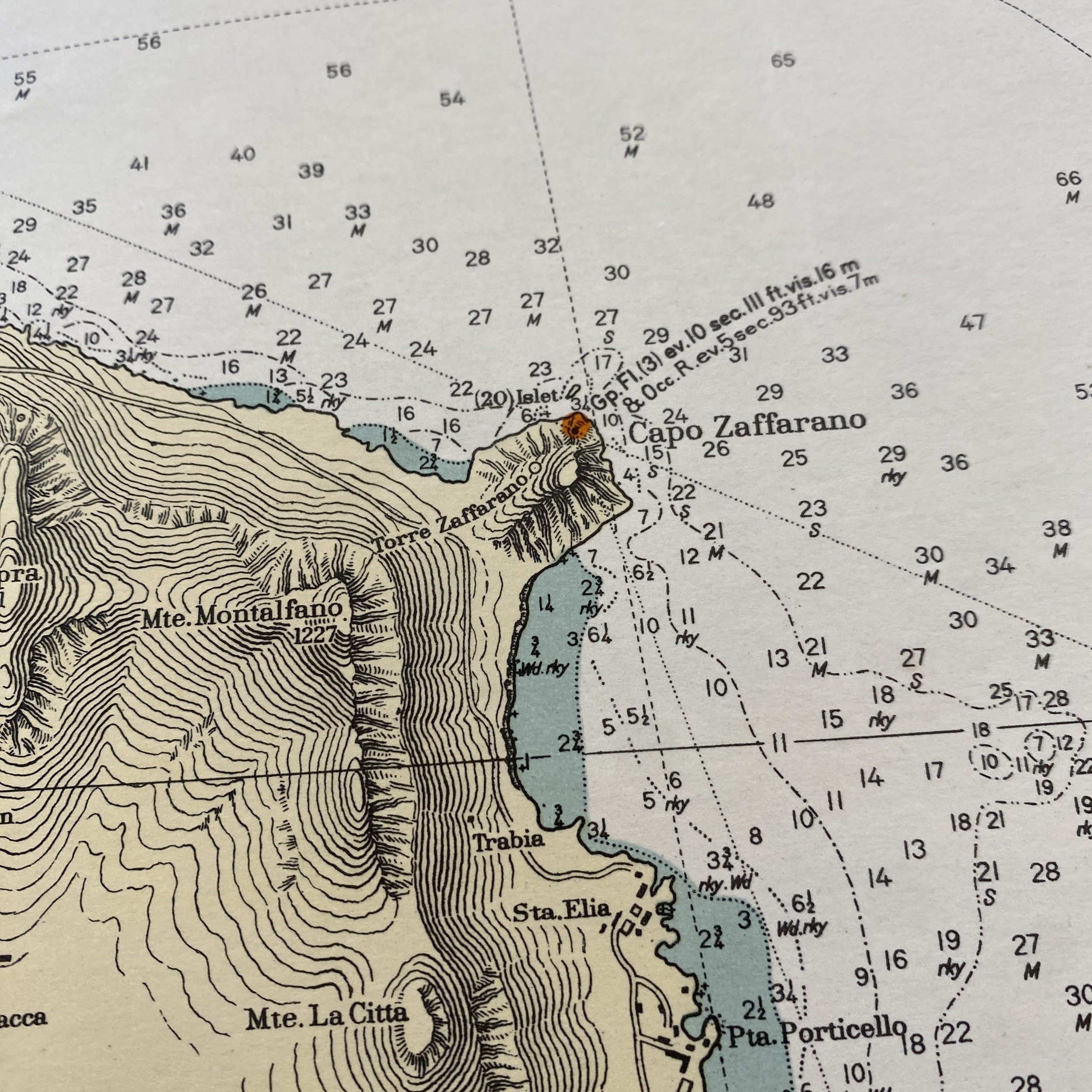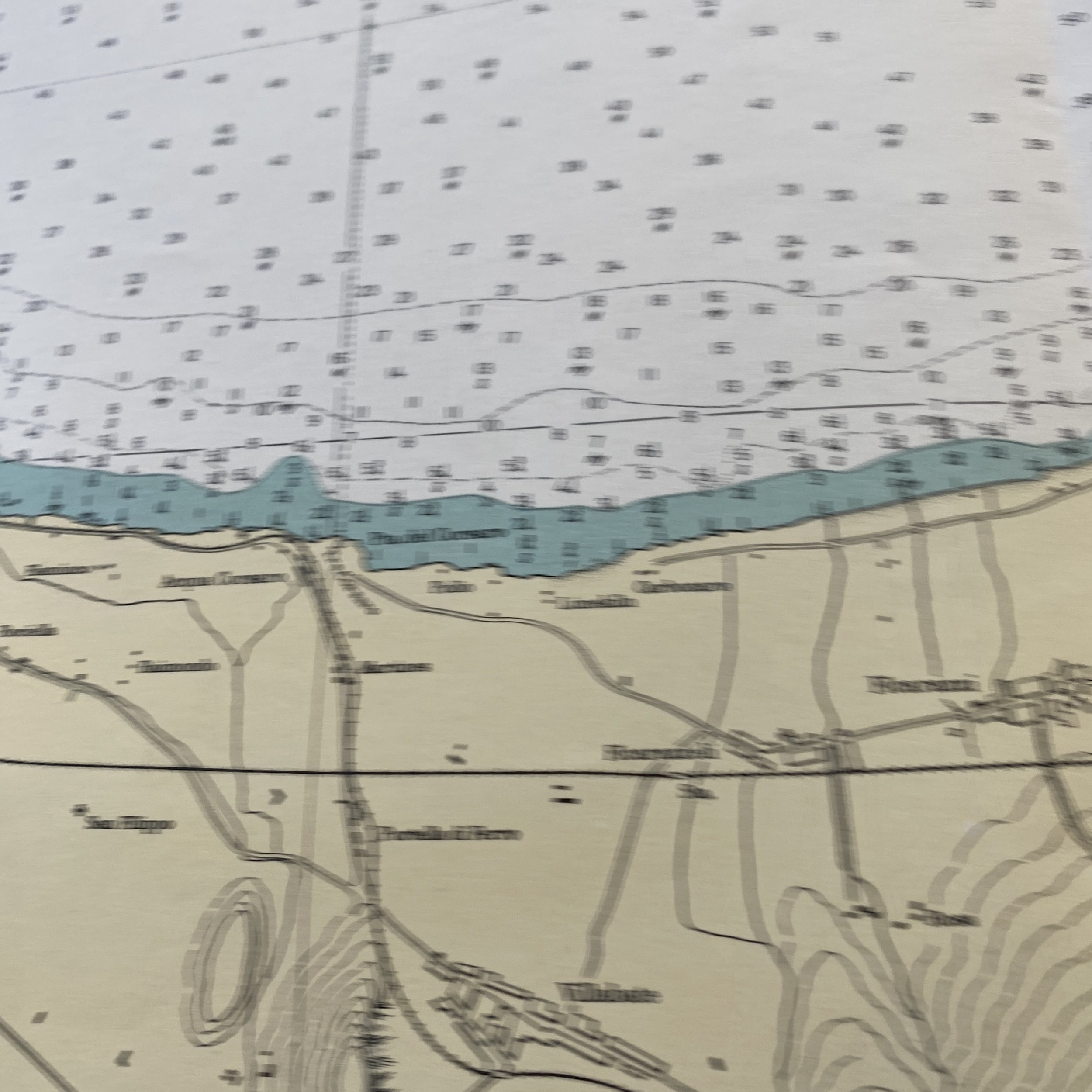WWII Operation Husky United States Navy Gulf of Palermo Sicily Navigation Fathom Map

































WWII Operation Husky United States Navy Gulf of Palermo Sicily Navigation Fathom Map
Comes with C.O.A.
This original and museum grade, World War II United States Navy navigation fathom map was used by USN ships operating around Sicily and the Gulf of Palermo.
During World War II, Sicily became a focal point for Allied and Axis forces due to its strategic location. The Allies aimed to control the Mediterranean Sea, and Sicily was a stepping stone to launching further offensives into mainland Italy. Naval activities in the Mediterranean during this period were diverse and included convoy escort, amphibious landings, and patrols to ensure control of vital sea routes. The presence of naval forces in the Mediterranean, including the U.S. Navy, played a crucial role in supporting land operations, securing supply lines, and preventing Axis forces from reinforcing their positions. The U.S. Navy, along with other Allied naval forces, was involved in supporting the invasion of Sicily during Operation Husky in July 1943. This operation marked the beginning of the end for Axis control in the Mediterranean, paving the way for further Allied advances into Italy.
The Gulf of Palermo and its surrounding waters posed significant challenges for the U.S. Navy. Axis forces were well-entrenched, and the coastal geography demanded meticulous planning. The U.S. Navy responded with innovation, employing new amphibious warfare tactics, coordinating closely with other Allied naval forces, and adapting to the unique challenges presented by the Mediterranean environment.
World War II witnessed the United States Navy emerge as a global force, playing a pivotal role in multiple theaters of war. One such theater was the Mediterranean, where the U.S. Navy, alongside its Allied counterparts, engaged in operations that had far-reaching implications for the overall course of the war.
The strategic importance of the Mediterranean Sea cannot be overstated during World War II. Controlling this vital waterway meant dominance in the southern European and North African theaters. The Axis powers, particularly Italy and Germany, sought to consolidate their control over the Mediterranean, threatening the Allied supply routes and access to key resources. In response, the Allies, including the United States, committed significant naval and ground forces to secure this crucial region.
Operation Husky, the Allied invasion of Sicily, marked a turning point in the Mediterranean Theater. Executed on July 9, 1943, this joint British and American operation aimed to remove Axis forces from the island of Sicily and open up a pathway to mainland Italy. The U.S. Navy played a vital role in the amphibious assault, providing crucial naval support for the landings.
The success of Operation Husky had profound implications for the overall war effort. Sicily's liberation disrupted Axis supply lines, weakened their control over the Mediterranean, and set the stage for subsequent Allied offensives in Italy. The U.S. Navy's role in Operation Husky showcased its ability to project power across vast distances and operate in diverse environments, contributing significantly to the Allies' strategic advantage.